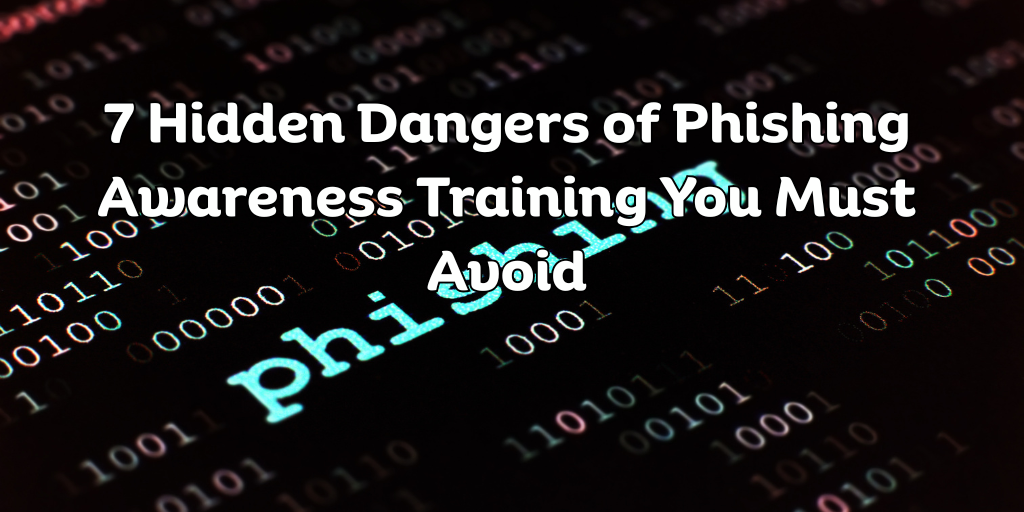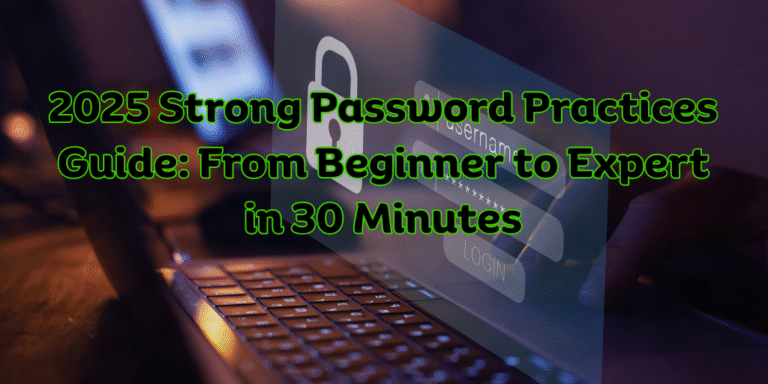Phishing attacks are one of the biggest cybersecurity threats today. These attacks target businesses of all sizes. As phishing methods improve, phishing awareness training is now essential. This training helps employees spot phishing attempts and respond quickly. In this guide, we’ll show you why phishing awareness training is so important, how to do it, and the best tools for 2025.
What is Phishing Awareness Training? Why Your Business Needs It
Phishing awareness training teaches employees how to spot phishing attacks. It helps them recognize phishing emails and know how to report them. This is a key part of protecting your business from online threats.
Common Mistakes to Avoid:
-
Assuming employees know what phishing is: Many employees, especially outside IT roles, may not know how to spot phishing attacks.
-
Not testing employees regularly: Just teaching isn’t enough. You need to test employees to see if they understand phishing threats.
-
Not updating training: Phishing methods change all the time. You must keep training up to date.
-
Relying only on automated tools: While tools like email filters help, they aren’t enough. Employees need training, too.
Avoiding these mistakes will help your business stay secure.
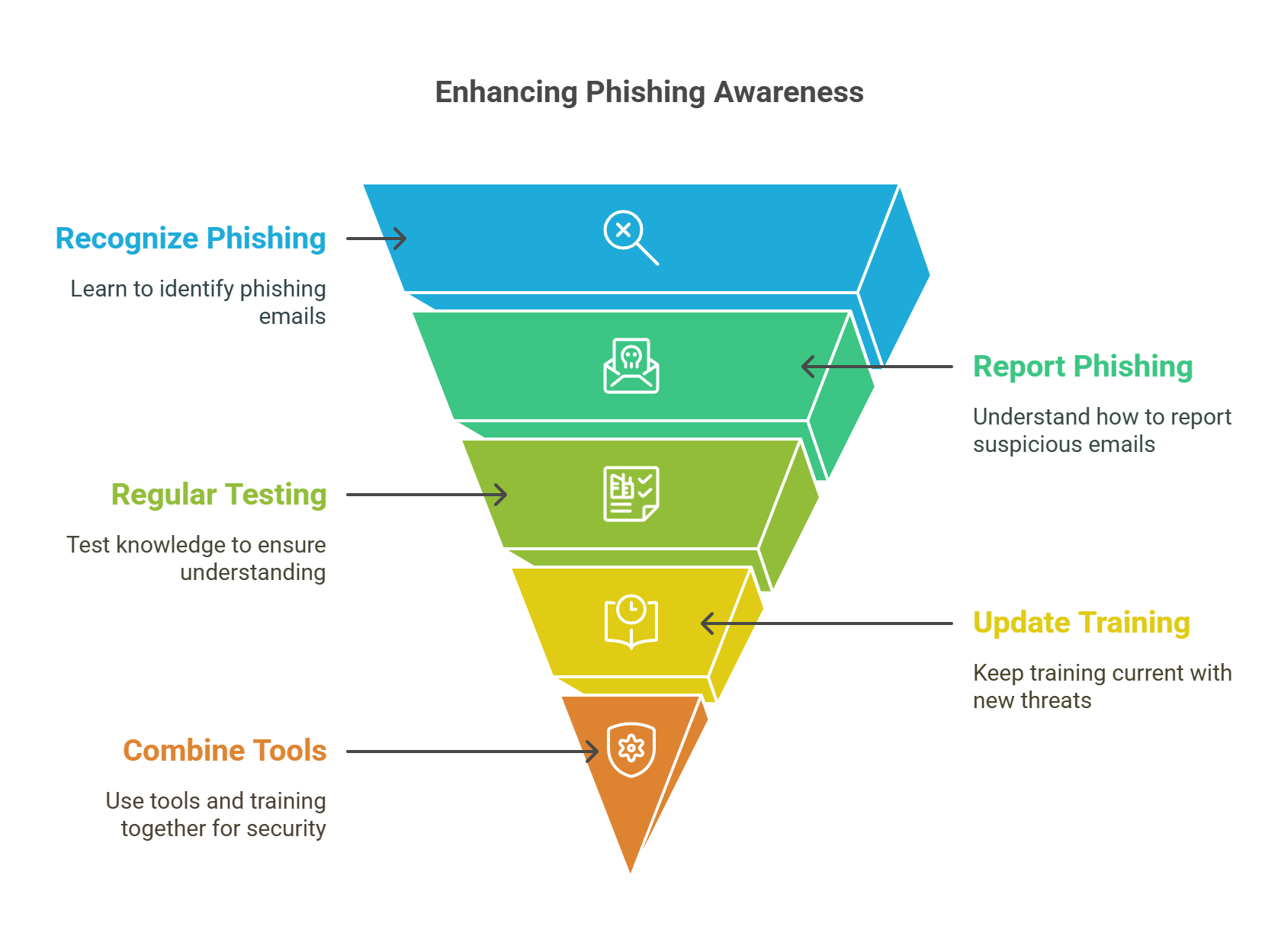
The Complete 2025 Guide to Phishing Awareness Training
Phishing attacks are getting more sophisticated in 2025. This makes phishing awareness training even more important. A solid training program should cover the following:
-
Types of Phishing Attacks: Employees need to spot types like spear phishing, whaling, and vishing.
-
Phishing Red Flags: Teach employees to look for signs like strange sender addresses, poor grammar, or suspicious links.
-
Simulation Training: Simulated phishing attacks help employees practice identifying threats in a safe environment.
-
Reporting Protocols: Employees must know how to report phishing attempts, whether internally or using cybersecurity software.
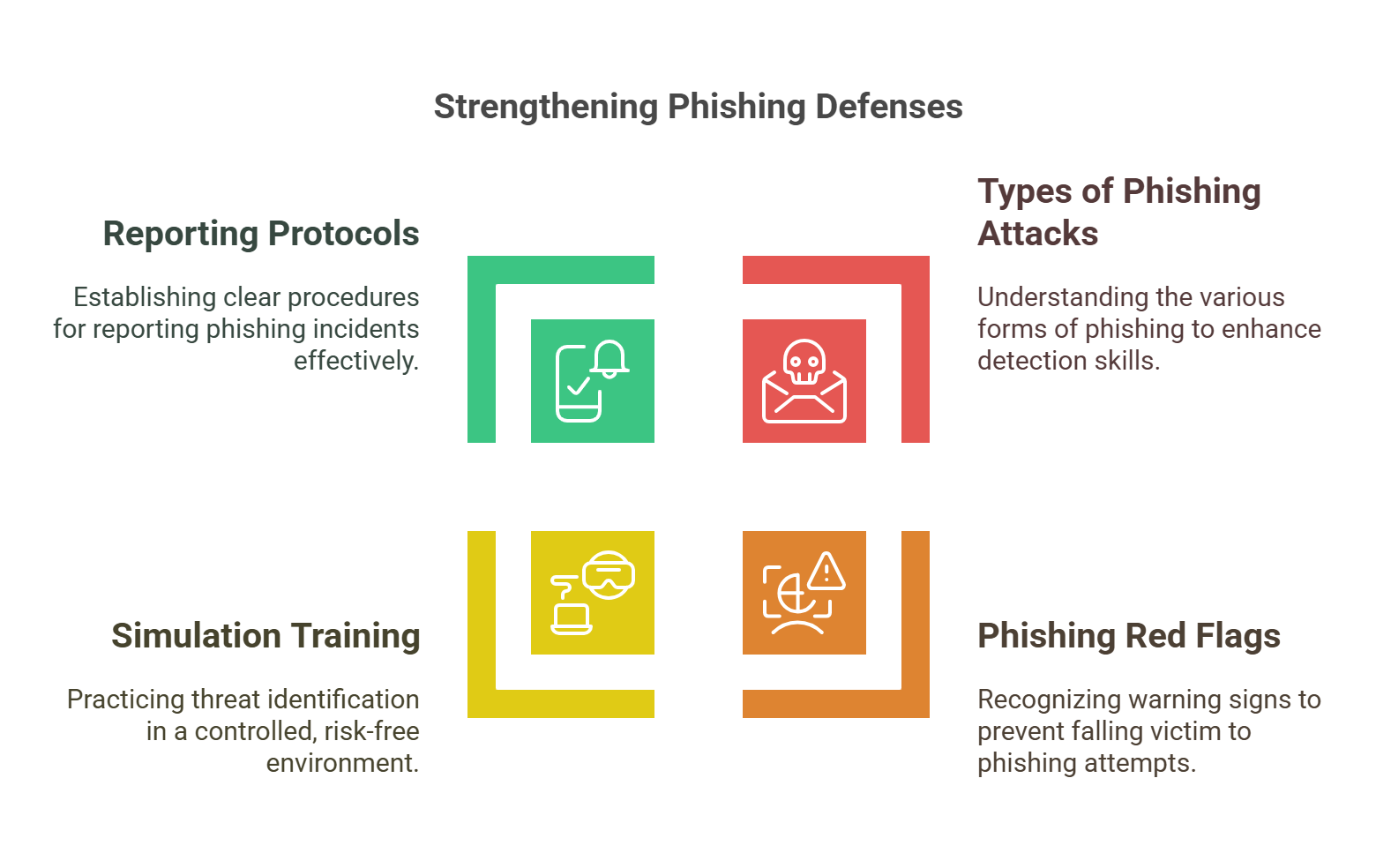
Key Benefits of Phishing Awareness Training:
-
Lower Risk of Data Breaches: Employees who are well-trained can stop phishing attacks before they cause harm.
-
Better Compliance: Some industries need phishing awareness training for compliance.
-
Stronger Cybersecurity Culture: Regular training builds a security-conscious culture in your company.
5 Research-Backed Phishing Awareness Training Strategies for 2025
-
Phishing Simulations: A 2024 study by the Cybersecurity Research Institute showed that companies with regular phishing simulations reduced phishing incidents by 30%.
-
Microlearning: Research from Harvard Business Review shows that short, interactive training sessions keep employees engaged and improve retention.
-
Employee Rewards: A 2023 report from CyberSafe Solutions showed that offering rewards for spotting phishing attempts increased participation by 20%.
-
Role-Based Training: Tailor training to different job roles. IT staff may need more advanced training, while office staff should focus on social engineering tactics.
-
Ongoing Education: One-time training isn’t enough. Continuous education helps employees stay updated on new phishing tactics.
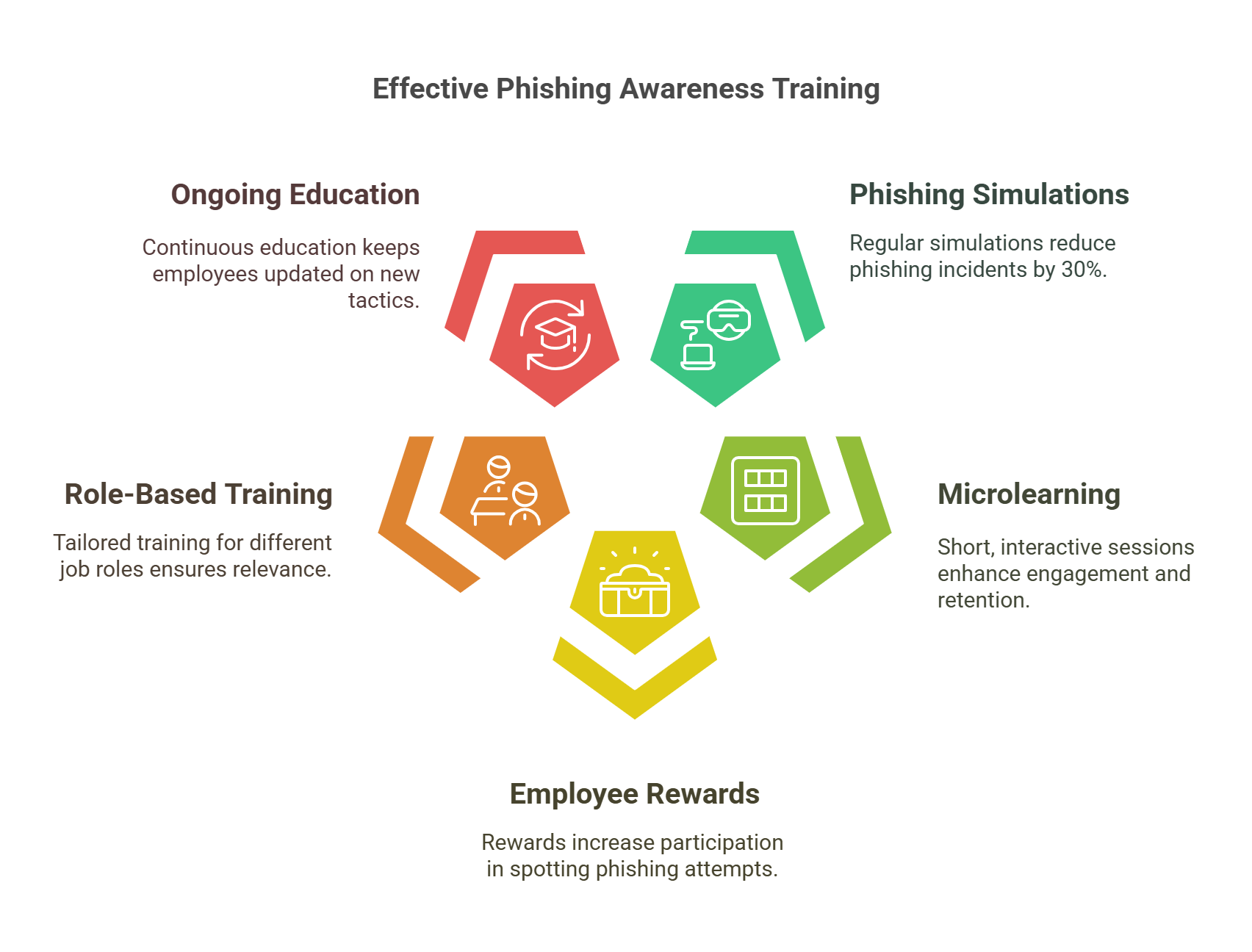
7 Hidden Dangers of Phishing Awareness Training You Must Avoid
-
Overloading Employees with Information: Too much information can overwhelm employees. Keep training short and focused.
-
Ignoring Emotional Impact: Phishing scams often use fear or urgency to trick people. Train employees to stay calm and think clearly.
-
Using Outdated Materials: Phishing tactics evolve quickly. Update your training regularly to stay effective.
-
Not Having Clear Reporting Procedures: Employees need clear instructions on how to report phishing attempts. Without this, they may hesitate to act.
-
Skipping Refresher Courses: One-time training isn’t enough. Regular refresher courses help maintain alertness.
-
Ignoring Remote Workers: Remote workers are more vulnerable to phishing attacks. Provide specialized training for them.
-
Not Involving Leadership: Employees may not take training seriously if leaders are not involved. Ensure leadership is part of the training.
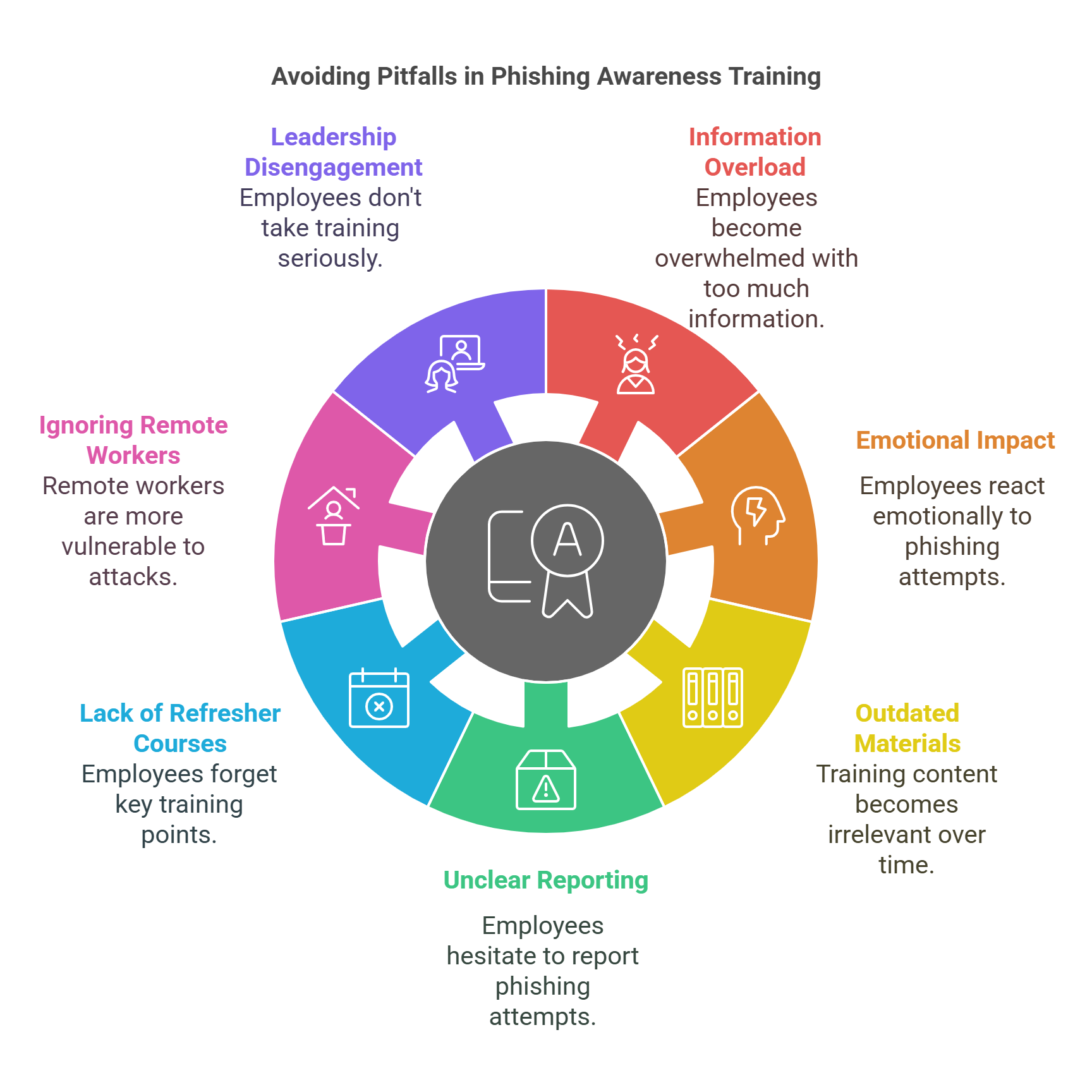
Expert Predictions: Where Phishing Awareness Training is Heading in 2025
As phishing attacks become more complex, phishing awareness training will adapt. Here are some expert predictions for 2025:
-
AI-Powered Training: Personalized training powered by AI will analyze employee behavior and suggest lessons tailored to their needs.
-
Integration with Cybersecurity Programs: Phishing awareness training will become part of a wider cybersecurity education program.
-
Focus on Remote Work: Training will emphasize securing home networks and personal devices for remote workers.
-
Behavioral Analytics: Future programs will track progress and predict who may be vulnerable to phishing.
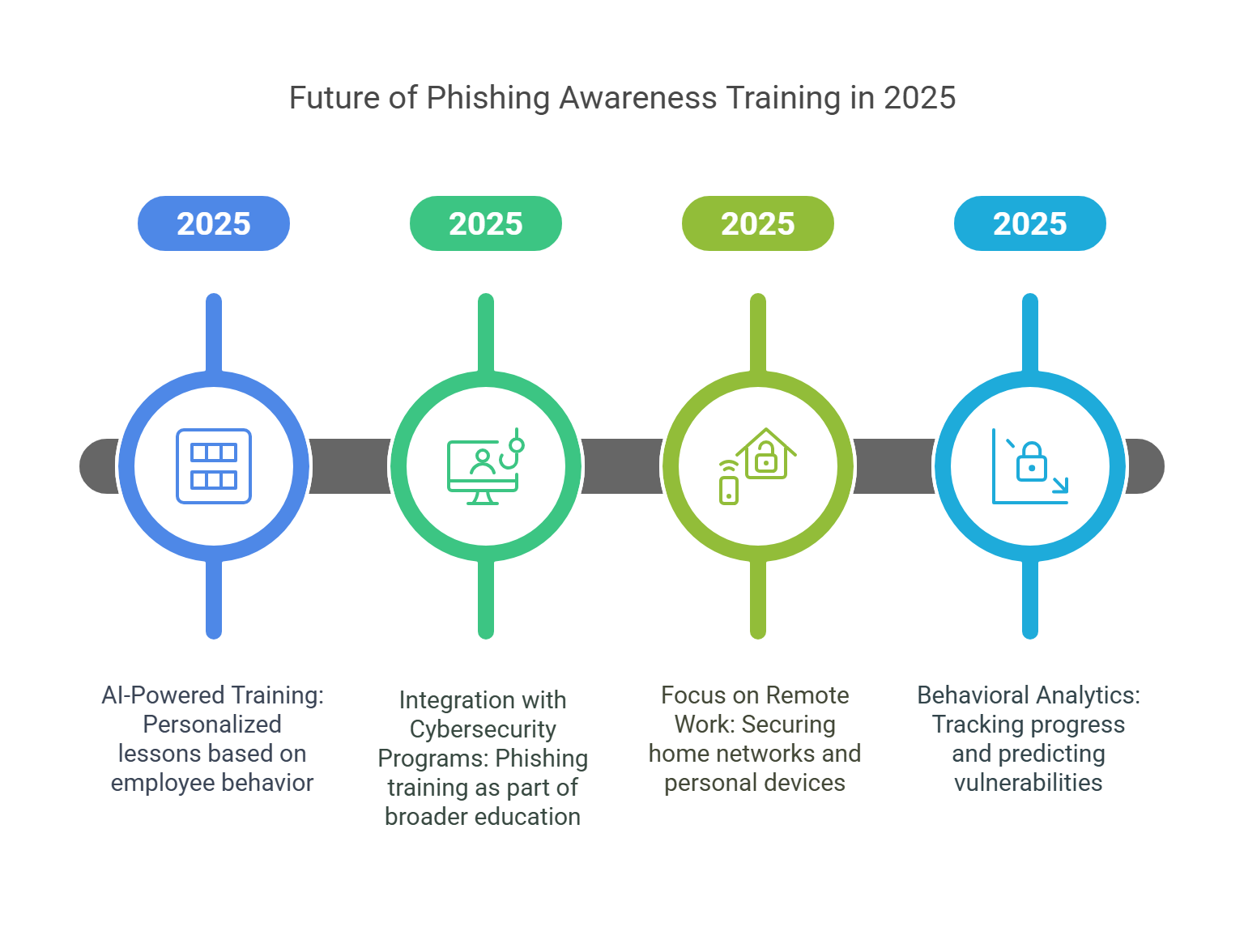
FAQs (Answer “People Also Ask” Questions)
Q: What are the best phishing awareness training programs for employees in 2025?
A: Top-rated programs include KnowBe4, Proofpoint Security Awareness, and CISA training resources. These offer engaging lessons and phishing simulations.
Q: How can businesses conduct effective phishing simulation tests for staff?
A: Use tools like PhishMe or Cofense to create realistic phishing scenarios. These platforms let you track responses and provide feedback.
Q: What’s the difference between free and paid phishing awareness training courses?
A: Free courses offer basic education, while paid courses often include advanced features like simulations, role-based training, and detailed analytics. Paid courses may also offer support and certification.
Q: Why is phishing awareness training important for compliance?
A: Many industries, such as healthcare and finance, require phishing awareness training to comply with regulations like HIPAA and PCI-DSS. Training reduces breaches and ensures compliance.
Your Custom Phishing Awareness Training Implementation Plan
-
Assess Current Training: Review existing programs and identify gaps.
-
Choose the Right Tools: Pick a phishing awareness platform like KnowBe4 or PhishLabs.
-
Create a Schedule: Set up regular training updates, such as monthly or quarterly.
-
Run Simulations: Regularly test employees to see how well they spot phishing attempts.
-
Review and Adapt: Track progress and adjust training as needed.
Our Testing Process
We evaluate phishing training programs based on ease of use, effectiveness, and engagement. Our process involves running simulations, collecting feedback, and staying updated on new phishing methods.
Conclusion
Phishing awareness training is vital for protecting your business. By following the best practices in this guide, you can lower the risk of data breaches, improve compliance, and create a more security-conscious workforce. Start your training today and prevent phishing attacks before they happen.
